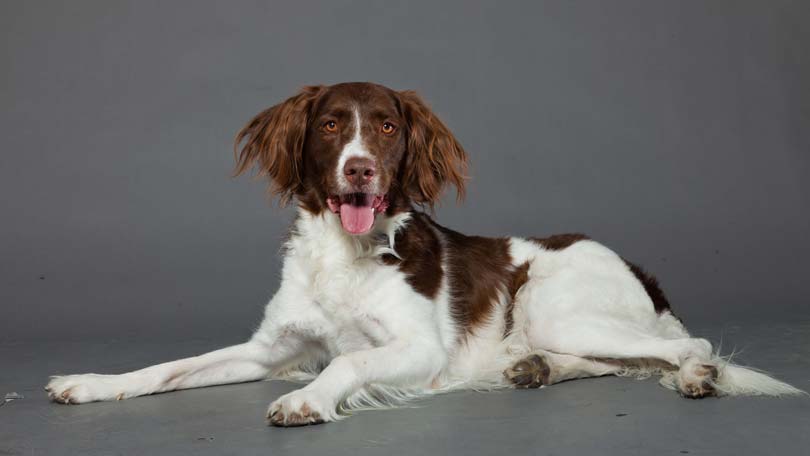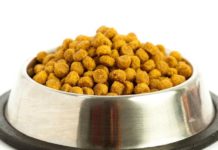
Although from a nutritional point of view canine adulthood is a life stage less critical than puppyhood and old age, feeding adult dogs a proper, well balanced diet is still of paramount importance. And this should not be surprising, since a correct diet is the cornerstone for ensuring optimal health and quality of life of our pets, as well as the most natural and effective way to increase their longevity. It is well known in fact that errors in the diet of adult dogs can lead to a variety of nutrition-related problems that can have a significant negative impact on dogs’ health and long life. Among these problems, it is enough to mention digestive, renal and metabolic disorders, as well as obesity (a true plague especially for dogs living in the industrialized countries) and its related consequences, such as orthopedic conditions, cardiovascular diseases, respiratory disorders and type-2 diabetes.
Formulating a correct diet plan for an adult healthy dog first requires the determination of its daily calorie and nutrient requirements. Nutritional requirements tables are available to determine the specific needs of any individual dog, but they are perhaps more useful to veterinarians and pet nutritionists than to pet owners, given the complexity of their use. However, knowing at least the daily calorie requirements of adult dogs may be helpful to pet owners to feed their pets the correct amount of commercial pet food, while those who prefer feeding adult dogs a home-made diet would be better to consult with a veterinarian or buy a specialist book not to incur in dietetic errors and to provide their pets not only with the correct amount of calories, but also with the correct amount and proportion of all nutrients (proteins, carbohydrates, fats, vitamins and minerals). To learn more about a good canine supplement for your dog, check out Nutra Thrive reviews
Calorie Requirements for Your Dog
One of the most important parameters used to determine the calorie requirements and formulate the daily ration for adult dogs is the metabolizable energy (ME), which is defined as the amount of calories from pet food that can be used by the pet’s body once digestion is complete. In other words, the metabolizable energy equals the gross energy contained in pet food minus the energy lost in the feces, urine and combustible gases. The requirement for metabolizable energy of an adult healthy dog varies depending on many factors, first of all on its body surface area, which in turn is related to the dog’s size. In this regard, it is worthwhile to remember that small size dogs have a body surface area that is proportionally greater than that of large and giant size dogs: this means that the calorie requirement per kg of body weight is higher in small size breeds than in large and giant breeds.
Calculating the body surface area of a dog is not practical however, and this is the reason why the quantitative evaluation of the metabolizable energy required by each individual dog (expressed as kilocalories of ME per day) is based on another more practical parameter, which however takes account of the body surface area: the metabolic weight (MW). This is defined as the body weight in kilograms (BW), raised to the 0.75 power: MW = BW0.75. In this way, the calorie requirements of an adult healthy dog that lives in optimal climate conditions can be calculated as follows:
ME (kcal/day) = BW0.75 * K
where K is a factor that accounts for the physical activity level of each individual dog and is equal to 132 for inactive dogs, 145 for moderately active dogs, 200 for intensely active dogs and 300 for dogs engaging in strenuous and sustained physical activity such as sledge dogs. To give an example, an adult, inactive German shepherd of 30 kg body weight needs about 1,700 kcal of ME per day (ME = 300.75 * 132), while the same dog in condition of intense physical activity needs about 2,550 kcal of ME per day (ME = 300.75 * 200).
Other factors, however, influence the daily calorie requirements of adult dogs, besides their size and physical activity level. These include the dog’s breed (breeds prone to obesity versus breeds prone to thinness), the physiological state (lactation, gestation) and the climate conditions (cold, mild or hot climate). Without entering into the details for the calculation of the energy requirements for each particular condition, it is enough to say that the quantitative evaluation of the metabolizable energy requirements in particular conditions of breed, physiological state and environmental climate is based on the application of well-defined correction factors to the above general formula for ME. For example, in Beagles, Cockers, Labrador retrievers and Golden retrievers, which are prone to obesity, the energy requirement value obtained using the above general formula should be multiplied for a correction factor of 0.9, which means that these breeds needs only 90% of the calorie amount calculated with the general formula for ME. Similarly, for breeds prone to thinness, such as Greyhounds, Great Danes and hunting breeds, the correction factor is of the order of 1.1, which means that the daily energy requirement for these breeds is 10 percent higher (110%) than the theoretical calorie amount calculated.
Once the daily energy requirement of an adult dog is known, it is not difficult to evaluate the amount of commercial pet food it needs per day: to make this, it is enough to divide the calculated daily calorie requirement of the dog by the calorie content in the pet food, which is usually reported on the label. For example, if a dog requires 1,500 kcal per day and the calorie content of the pet food is 500 kcal per can or pack, that dog will require 3 cans or packs of that pet food (1,500/500) per day. If the calorie content of the pet food is not reported on the package, it can be easily calculated from the label data regarding the percentage content of protein, carbohydrate and fat:
Calorie content (kcal/100 g of pet food) = (protein% * 3.5 + fat% * 8.5 + carbohydrate% * 3.5)
Needless to say that, in order to properly feed an adult dog, the pet food chosen should be of the best quality, that is to say it should be expressly formulated for adult dogs, should contain the correct amount and proportion of nutrients and should be made with the highest quality ingredients. It is also important to remember that the total daily ration should be divided into two or better three feedings per day, in order to give the dog a feeling of satiety lasting all day long, avoid excessive fluctuations in blood sugar and insulin levels and avoid stomach overload which in turn can lead to stomach torsion and dilation (a potentially lethal occurrence in predisposed breeds).
As already said, feeding adult dogs correct, well-balanced homemade diets is not easy. In this case, in fact, besides the specific daily energy requirement of the dog, it is necessary also to know all its other nutritional needs, as well as the nutritional qualitative and quantitative properties of any ingredient used to prepare the homemade dog food. In addition, once all these data are known, it is necessary to perform complex calculations in order to formulate proper, well-balanced homemade diets. This is the reason why, before feeding adult dogs a homemade diet, it is better to consult with a veterinarian or a pet nutritionist who can provide customized recipes and specific diet plans, appropriate for the nutritional needs of any individual pet. In any case, it is worthwhile to remember that, although dogs are part of the families, they are still animals and not humans. So we need to respect their needs as animals first and feed them as such, avoiding providing them with a diet based on human foods and recipes or their remnants, which will unavoidably lead our dogs to obesity and/or nutritional deficiencies and imbalances.





